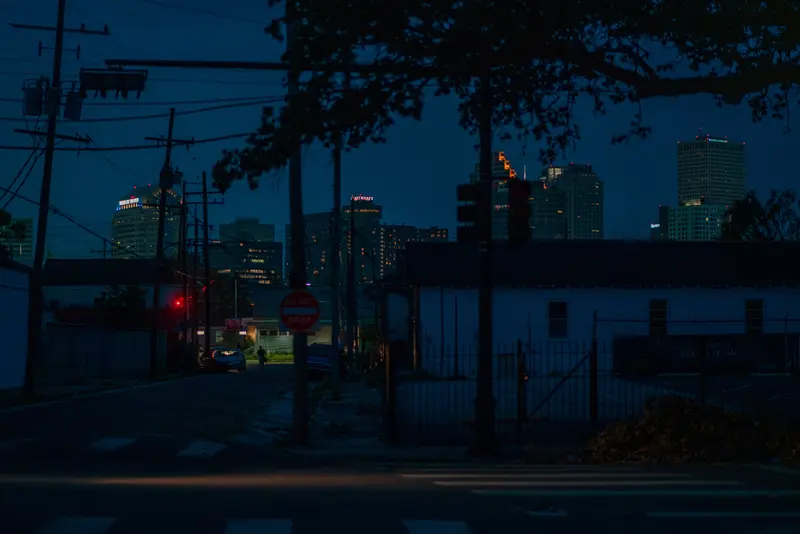This story was co-reported with NPR. Want to learn more? Join our reporters on Sept. 28 for a live virtual event titled “Crises and Inequities.”
The day after Wilma Banks lost power, the stale, sticky air inside her apartment became suffocating.
Typically, when her breathing was strained, Banks strapped on her plastic nebulizer mask. A medicated mist would flow into her lungs, making her short breaths full again.
But after Hurricane Ida knocked out her power on Aug. 29, she couldn’t use the device that brought her lungs relief. She knew her oxygen level would continue to drop. Her heart could stop.
She dialed city agencies, and employees told her to find a charging station for her nebulizer as well as her CPAP machine, but they did not help her secure what she actually needed: temporary lodging where her devices could remain plugged in. Banks, who lived alone in New Orleans East, couldn’t turn to her friends and neighbors. For 30 miles in every direction — and for more than a million residents — the power grid had failed.
Like many native New Orleanians, Banks, 58, had lived through most of the city’s catastrophic hurricanes, from Betsy in 1965 to Katrina in 2005. She learned to stock three days of canned food, candles, a full tank of gas and her emergency inhalers. She thought she could ride out the storm, especially since no official had mandated a citywide evacuation.
It would soon become painfully clear to Banks and other residents that the power company Entergy New Orleans, along with its parent corporation, was no better equipped to withstand Ida than any hurricane that came before.
For years, Banks had worked in the city’s casinos, including Harrah’s and the Fair Grounds, their clouds of cigarette smoke slowly exacerbating her asthma and contributing to her eventual congestive heart failure. On the fourth day of the outage, relying on her car to charge her phone, she tweeted at ENO: “the strain on my heart is getting worse. I need my machines!!”
On her sixth day without power, as she began to gasp for air, Banks pushed her finger into her pulse oximeter. Her blood oxygen level had dropped to 77%, so low that she was at risk of organ damage. Every time she caught a breath, she worried another wouldn’t come.
She dialed 911. Her neighbors sat with her while she waited for the ambulance.
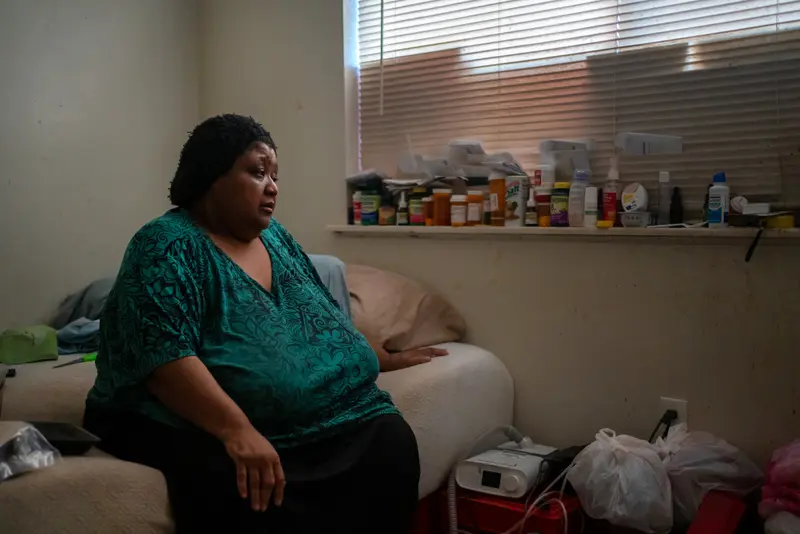
By the time Banks was rushed into the ICU on Sept. 3, ENO had restored power to only 20% of its customers. And in this city with roughly double the national poverty rate, the many residents who couldn’t afford to evacuate faced an outsize share of the harm brought by the power outage. Of the 14 people who died in New Orleans as a result of Ida, nine deaths were from “excessive heat during an extended power outage” and two were from carbon monoxide poisoning, as families turned to generators to power their homes, the Orleans Parish coroner found.
When residents and city officials pressed ENO about the catastrophic power failure, company executives explained that the outages couldn’t be avoided during a big storm like Ida. But an investigation by ProPublica and NPR found that the utility, along with its parent company, Entergy, failed to take the necessary steps to protect its customers against outages, despite opportunities after several big hurricanes to build more resilient systems.
Entergy has aggressively resisted efforts by regulators, residents and advocates to improve its infrastructure. The company’s restoration of its equipment after major storms didn’t prioritize the grid modernization that industry experts say could limit the scope and duration of power outages. Instead of shifting toward renewable energy, Entergy doubled down on building plants that emit greenhouse gases — the same pollution that has made hurricanes more intense.
ENO is uniquely positioned among American utilities to protect its interests because of how it’s regulated. The subsidiary is one of only two investor-owned utilities overseen by a city council; utilities typically are regulated by a state-level commission. That setup has often left the New Orleans City Council without sufficient resources and expertise to effectively regulate the monopoly electric utility, according to interviews with some residents, council members and former city officials.
Drawing on data, corporate filings, public records and interviews with more than two dozen sources, the news organizations found that unless ENO and Entergy make bold investments in New Orleans’ aging grid, extreme storms fueled by climate change will bring more dangerous and prolonged outages.
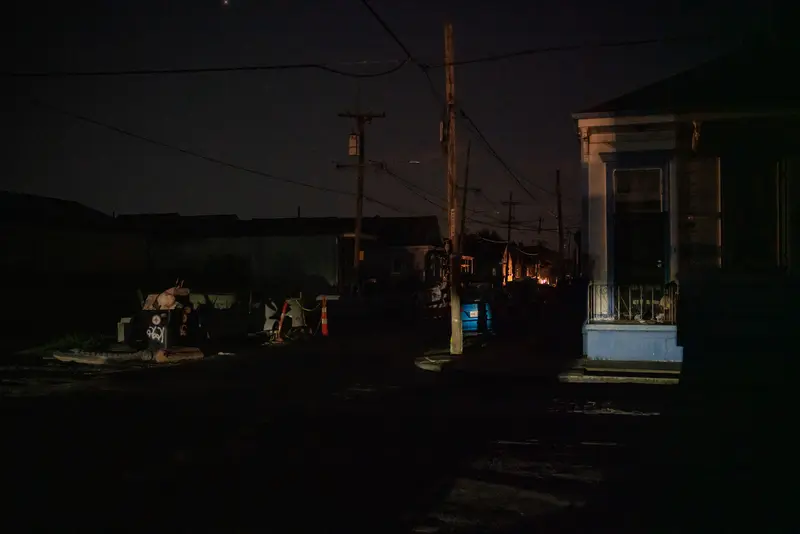
Entergy declined to answer most of ProPublica and NPR’s questions or grant interviews with its top executives. Entergy spokesperson Jerry Nappi said in a statement that Entergy, which serves 3 million customers in four states, has invested more than $6 billion in its Louisiana transmission and distribution systems since the beginning of 2016. Nappi added that the utility is now pursuing federal funding to further modernize its grid and is “actively working” toward reducing carbon emissions to net-zero by 2050.
“While ensuring the resilience of our infrastructure has always been a primary emphasis, we must accelerate our efforts in light of increasingly frequent and severe weather events,” Nappi said.
Five independent energy and environment experts who reviewed the findings of NPR and ProPublica’s investigation said that ENO and its parent corporation, a Fortune 500 company that made a record profit of $1.4 billion in 2020, had failed in recent years to reduce the scope of harm that a storm like Ida could cause. They expressed concerns over the utility’s insufficient grid investments, spending cuts for routine maintenance and overstatement of equipment’s capabilities to supply reliable power after storms. As a result, local officials were left to reckon with a stark reality: The most vulnerable New Orleans residents were left powerless by the city’s most powerful company.
“I don’t think that New Orleans residents should accept a company not acting in their best interest,” said Destenie Nock, assistant professor of engineering and public policy at Carnegie Mellon University. “Entergy should have an obligation to make sure that its customers have reliable power.”
The morning of Aug. 30, the day after Ida hit, New Orleans City Council President Helena Moreno passed fallen trees and felled utility poles on her way to Avondale, a nearby suburb on the West Bank of the Mississippi River. She wanted to check out something she had heard a short while earlier from ENO’s top executive, who’d explained to the full council that all eight of the city’s transmission lines had failed. As the chair of the committee that regulates the utility, Moreno was skeptical that the grid had been fully storm-ready. Once she turned past the old Avondale shipyard, she spotted an Entergy transmission tower that had buckled under its own weight, ripping power lines from the sky.
At the foot of the tower, she ran into a TV reporter, who asked her if Entergy had spent enough to prepare for Ida. “Look, this may have been such a strong horrible storm that nothing could’ve prevented what went wrong,” said Moreno, a former journalist who covered Katrina. “But for all eight to fail? I’m wondering if it could have been prevented.”
If the company didn’t provide a full explanation about the outage, she thought, the council would need to find those answers.
When Hurricane Gustav struck the Gulf Coast in 2008, leaving more than 100,000 Louisiana customers without power for over a week, Entergy’s grid was in shambles. Only one of the transmission lines serving New Orleans survived the storm. Dillard University professor Robert Collins, an expert in disaster planning, said ENO had a rare opportunity after Gustav to convince officials to let the company collect from its customers billions of dollars to modernize its grid, an ambitious project that would mirror the $14.5 billion rebuild of New Orleans’ levees following Katrina.
“We are going to have future storms,” then-Gov. Bobby Jindal warned after Gustav. “It makes sense to prepare our infrastructure so that we don’t have these extended outages.”
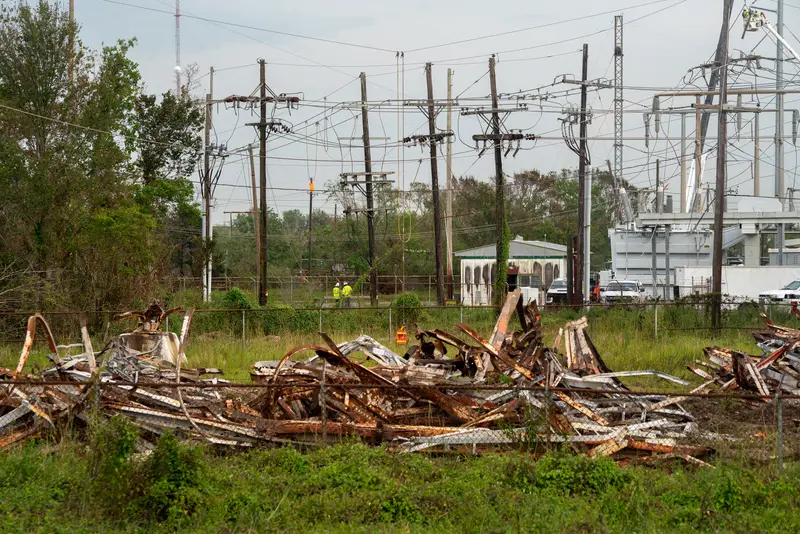
Entergy provides power in a region uniquely prone to extreme weather. Massive costs have followed each hurricane: up to $600 million for Gustav in 2008, $500 million for Isaac in 2012, $250 million for Zeta in 2020 and, that same year, $1.7 billion for Laura. Each wave of repairs has resurfaced questions about whether Entergy is doing enough to build a more resilient grid. In a 2019 climate report, Entergy described a five-year plan for its companies to invest “billions of dollars ... in grid modernization and resiliency.” Nappi told the news organizations that ENO has invested nearly $30 million in distribution system upgrades since the beginning of 2020.
ENO has dramatically reversed its fortunes since exiting a post-Katrina bankruptcy in 2007. From 2008 to 2017, the utility reported more than $650 million in operating income. Energy experts say deep, routine investments in grid upgrades such as burying power lines citywide, which would cost at least $2 billion over the long term, would increase the resiliency of the utility’s equipment, potentially lowering the costs after every storm and reducing the length and scope of power outages. Asked why ENO hasn’t considered such upgrades, Nappi replied: “Your question supposes that there are unlimited resources that can be supplied by customers, which obviously is unrealistic.”
ENO seeks permission from the council to increase fees paid by customers for repairs after hurricanes. The council typically approves ENO’s requests without requiring that the utility agree to those deeper grid investments. The council occasionally has required ENO to bury lines and conduct more rigorous pole inspections, but the scope of those initiatives were limited.
By the spring of 2017, residents frequently complained about power outages that occurred even on sunny days, so much so that the council launched an investigation. It found that more than a third of nearly 2,600 outages in the prior year were caused by equipment failures. While ENO blamed everything from aging infrastructure to pesky squirrels for the issues, council members also found that ENO had slashed spending for equipment upgrades and diverted funds earmarked for basic repairs. In 2019, the council fined ENO $1 million for its “inaction and omissions in mitigating” those outages. In a lawsuit, ENO alleged that the council “unlawfully” levied the fine and “disregarded” evidence that showed the company acted responsibly. The utility has yet to pay the penalty because the case is still pending.
“There’s an expectation that regulators are supposed to do whatever the company wants,” Moreno said. “That has been the expectation of the company for a while.”
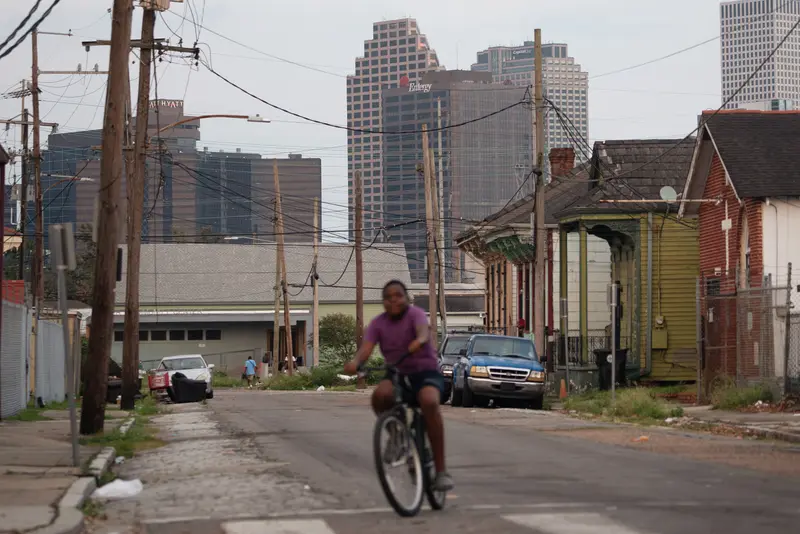
Ed Quatrevaux, former inspector general for New Orleans, said the council has not provided sufficient oversight of ENO. His office issued a report in 2015 that found council members “lacked basic controls to ensure transparency, prevent misconduct, and promote effective decision-making” in its oversight of ENO. (Clint Vince, a council utility adviser, said in a statement to the news organizations that the report was “discredited.”)
Council members also have had past financial ties to ENO, including one official who previously lobbied for ENO and another whose nonprofit received a grant from the utility. Council member Cyndi Nguyen, whose nonprofit received the grant, did not respond to ProPublica’s questions but has said the grant would not create a conflict of interest. Council member Jay Banks has lobbied both for Entergy and one of the council’s regulatory advisers. He said his experience on both sides has made him a better regulator. “My critics and haters are going to throw bricks,” Banks said. “It’s like being paid to lead two teams to the Super Bowl.”
ENO also faced accusations of bullying council members and giving misinformation to officials about the difficulties of moving toward carbon-free energy sources faster. Entergy did not answer the news organizations’ questions about its relationship with the council.
In the aftermath of Ida, Entergy Louisiana President and CEO Phillip May told reporters that its grid failed “because Mother Nature is the undisputed world champion.” But weather data from the New Orleans International Airport recorded gusts up to 90 mph, below what the company says many of its towers and lines can withstand. A report by analysts with energy consulting firm McCullough Research found that Entergy had “overstated” how long its transmission and distribution equipment can last because of the increased frequency of stronger hurricanes.
Back at City Hall, Moreno thought about all the sick, elderly and disabled residents who could not evacuate New Orleans. She wanted to help her city get better answers about the downed lines, destroyed poles and damaged substations. So she vowed to find out whether the utility had neglected its grid. But that investigation would have to wait until ENO restored the city’s power. With relentless heat predicted for days, she worried this outage had no end in sight.
New Orleans’ low-income residents face one of the highest energy burdens in the country, second only to Memphis, Tennessee, according to a 2016 study from the American Council for an Energy-Efficient Economy. Half of the city’s low-income households pay more than 9.8% of their earnings on their energy bills, and a quarter of them pay more than 18.9%. On average, households across the nation pay about 3.5% of their income.
Grace Hollins is among the New Orleans residents who spend a disproportionate amount on their electricity bills. Typically, she pays $300 — almost a fifth of her and her son’s total disability checks of $1,600 a month — for energy charges. “It’s money I don’t have,” she said.
In most American cities, a $300 power bill for a 1,200-square-foot apartment would be excessive, and Hollins struggled to keep up with hers. Last year, she had thought she had qualified for a federally funded energy assistance program for low-income residents that would have reduced her bill. She says she didn’t realize she had not been accepted into the program. Because of that misunderstanding, she missed several bill payments and ENO cut off her power. Now, she’s on a payment plan that has nearly doubled her monthly bill, to $590.
“I better pay, or I will be in the dark,” she said. “Even though it takes away from buying wipes, towels and disinfectant to keep up the house, I have to have a house to keep a house up.”
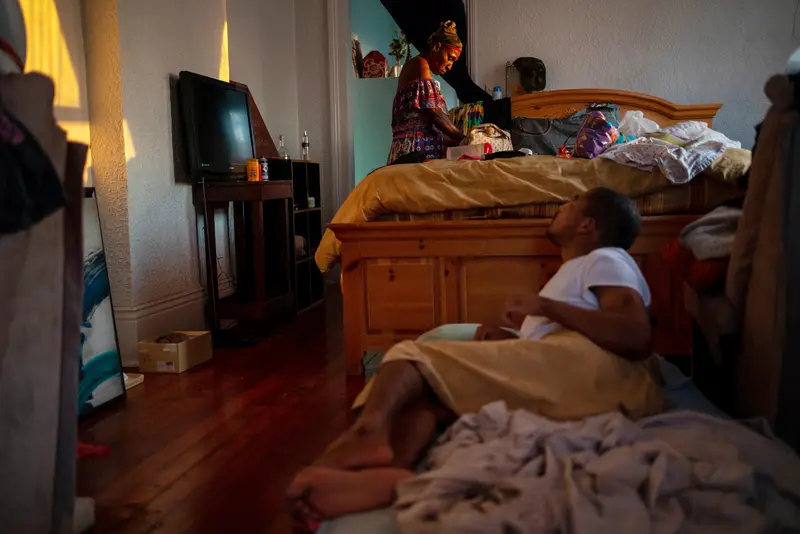
Six days after Ida knocked out Hollins’ power, her son Carl dozed in the still afternoon heat of their shotgun apartment, its glass windows blown out by the storm.
Carl, who is 28 and has cerebral palsy, struggled through the sweltering nights, worrying Hollins that the 100-degree heat index would trigger one of his seizures. Each day that their neighborhood, St. Roch, went without power, he grew increasingly sluggish and irritable.
Before the pandemic, Hollins collected tickets and welcomed Saints fans on the escalators of the Superdome. But when the pandemic hit, she stayed home with Carl, limiting time with other people to reduce exposure to the virus. Carl’s medical conditions required around-the-clock care, and Hollis sacrificed everything to keep him safe.
With the power shut off, Hollins tried in vain to keep her son cool. After nearly a week without electricity, she walked more than a mile to Louis Armstrong Park to grab 10-pound bags of ice, which partially melted by the time she returned to her apartment. She bathed Carl in the icy slush and every few hours misted him with a spray fan, but Hollins feared that it was not enough to stave off a seizure for much longer.

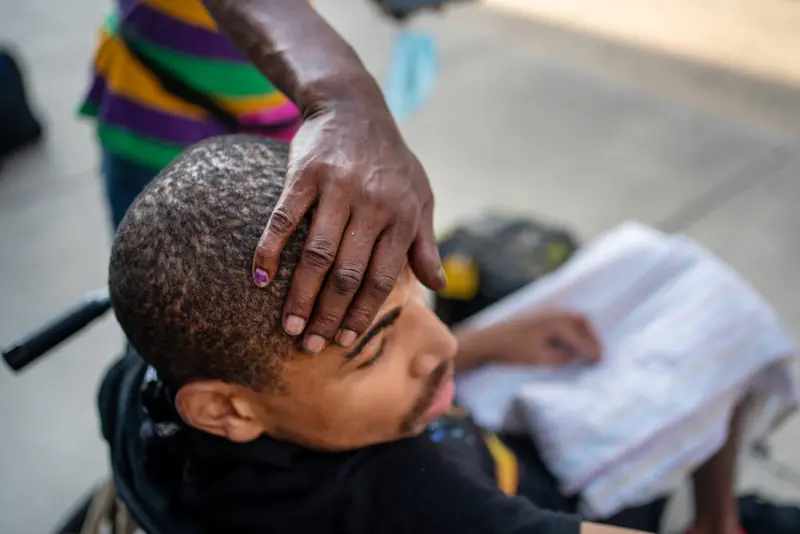
“He has got to get out of this house,” she told herself. She called several local motels, hoping she could find one with a generator, but they were all booked. Instead, she found a hotel room about 500 miles away in the suburbs of Atlanta, where she could be close to her brother. By now she had drained most of her spare cash, including on diapers for Carl. So she used the money that she had set aside for her electricity bill to help pay for the trip. (Her niece had set up a GoFundMe page to help offset the $1,500 total cost, but it had only raised a third of that by the time she left.)
In the early hours of Sept. 5, just as the morning sun began to bake the sidewalks of New Orleans, Hollins tenderly opened a bottle of orange juice for Carl, who was sitting in his wheelchair in the shade of the Greyhound station. She wiped beads of sweat from his brow and tried to keep him calm amid the throngs of travelers. It was the right decision to leave, she thought, but she worried about the cost of an extended trip if the power remained off and how she’d cover that $590 energy bill, due in three weeks.
“When we get back, we’re going to have to start all over again,” she said.
ENO’s infrastructure plans have delayed a meaningful shift toward more renewable, resilient energy sources, ProPublica and NPR found. In doing so, ENO is defying the advice of many climate experts. They have urged companies to reach net-zero carbon emissions as soon as possible to minimize global warming, an existential threat to a city like New Orleans that’s below sea level.
Two years ago, ENO implied it would sue council members if they adopted an ambitious clean energy proposal pushed by Energy Future New Orleans, a coalition of local advocacy groups. The Resilient and Renewable Portfolio Standard would have required ENO to shift to 100% renewable energy by 2040, a move advocates said would strengthen the grid by diversifying and decentralizing power sources.
Given that more than half its power is generated by natural gas plants, ENO said the city’s long-term policy to achieve net-zero emissions should be voluntary instead of mandatory and fought the proposal, criticizing it as an “unworkable, needlessly-restrictive renewables-only approach” that could force the company to prematurely retire its carbon-emitting plants.
This past spring, the council signed off on a less sweeping plan that will require ENO to shift to 100% renewable energy by 2050, will allow for carbon emission offsets and could limit the opportunity for more resilient grid upgrades. Nappi, Entergy’s spokesperson, did not answer questions about ENO’s legal threats, but he noted the utility operates solar projects throughout the region.
“To the extent that Entergy is not pursuing aggressive decarbonization, or actively fighting against aggressive decarbonization, it’s really undermining any efforts to give [New Orleans] a resilient system,” said University of South Carolina law professor Shelley Welton, whose research focuses on climate change, energy and the environment.
Rather than commit to a rapid shift toward renewable energy, ENO had another plan for strengthening its grid against future storms: the controversial New Orleans Power Station. In 2016, ENO proposed a natural gas plant big enough to light up over 65,000 homes and pitched it to the council as a way to keep electricity costs low during the hottest days of summer. Residents feared the fossil fuel plant would generate pollution and cost too much at $216 million. So ENO presented a second choice: a similarly priced plant that was roughly half as large but possessed a “black-start” capability that could quickly restore power following an outage. In part because of this technology, council members voted for the plant in March 2018. The lone dissenter, Susan Guidry, criticized ENO for not considering clean energy alternatives to “help save this city.”
“We have been given one option by Entergy: a fossil fuel plant,” Guidry said before the vote. “That’s the only thing they’ve analyzed. They haven’t analyzed alternatives. They said, ‘We don’t want to analyze transmission lines and upgrade to alternatives because it would cost too much money.’”
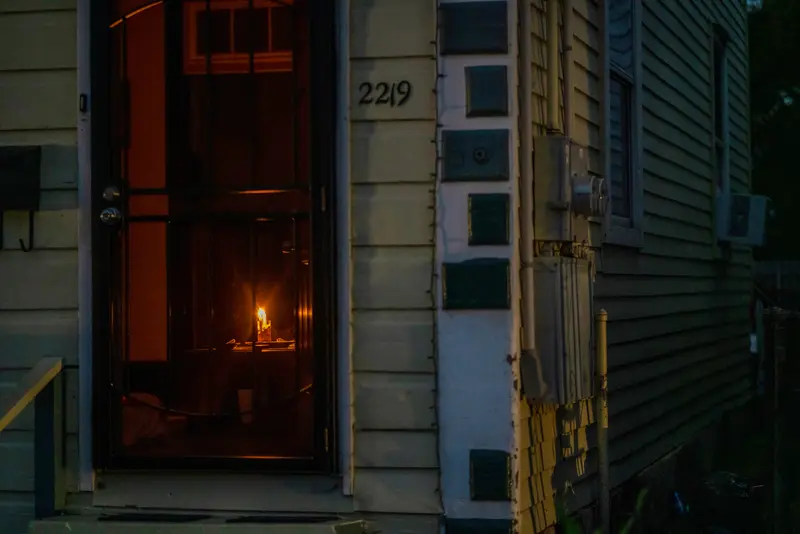
Two months later, The Lens reported that a PR firm hired by ENO had paid actors to attend a public hearing. Wearing orange shirts that said “Clean Energy. Good Jobs. Reliable Power,” they testified in support of the plant without disclosing that the PR firm paid them to be there. ENO claimed it had no knowledge about the actions of its PR firm. ENO President and CEO Charles Rice later stepped down into a lower role with the company following the scandal. After a council investigation found ENO “knew or should have known” about the paid actor scheme, Moreno, the council president, briefly considered a revote on the plant. She declined because ENO had already spent nearly $100 million on the plant following council’s initial approval. In February 2019, council members approved a $5 million fine against ENO, and they allowed the company to move forward with construction.
When Ida knocked out power citywide, council members expected that the black-start technology would work. The plant survived the storm, but it did not quickly supply power to any portion of the city. More than 48 hours passed before ENO restored power to the first 11,500 New Orleans residents. Logan Burke, executive director of the Alliance for Affordable Energy, said New Orleanians must learn why the plant failed at the very moment it was supposed to be used.
“This council must hold Entergy accountable for these promises,” Burke said.
After the storm, Entergy has shared a variety of explanations as to why the company didn’t use the black-start technology. First, May, the Entergy Louisiana president and CEO, said the natural gas plant required power from a downed transmission line. Then, he explained the plant could start up by itself, but the company chose a different way to “rapidly restore power” to more customers. At a press conference, ENO CEO and President Deanna Rodriguez claimed the plant “worked as it was designed to work” and served as a “big part of the solution.” Just before the press conference ended, a reporter asked Rodriguez if ENO wanted to increase rates for Ida repair costs. She replied that ENO hoped to get federal aid, but that it wouldn’t rule out customers footing the bill.
Lawyers this week filed a class-action lawsuit on behalf of residents against Entergy and its subsidiaries, calling recent blackouts deadly and avoidable. (Nappi said Entergy does not comment on pending litigation.) And several council members are now calling for a suspension of rate hikes until a post-Ida outage investigation is completed. Regulators could deny ENO’s rate increase for Ida repair costs if the company acted imprudently. Council member Joe Giarrusso said this storm could spur the drastic grid investments called for by Jindal, the ex-governor, after Gustav. How ambitious those upgrades might be, according to Mayor LaToya Cantrell, depends on the funding provided by the Biden administration.
“It cannot be on the backs of ratepayers,” Cantrell said. “We need the federal government to assist.”
In a press release Tuesday, Entergy stated that it would be open to selling ENO, merging it with another subsidiary, spinning it off as a stand-alone company or even allowing the city to run its own utility. If things remain the same, council member Kristin Palmer said, ENO will face minimal financial risks for not building a stronger grid. Instead, New Orleans residents, who are both ratepayers and taxpayers, will pay the highest cost.
“The way it’s structured, we’ll just keep doing it the old way,” Palmer said. “The old way doesn’t work.”
Because Entergy and ENO have monopoly control over the city’s electric grid, consumers currently have little choice but to pay the company for light. Without true competition, companies like Entergy make decisions that often pose the lowest risk to their bottom line. And these decisions can pose the highest risk to residents, according to interviews with residents, council members and former city officials.
When the companies’ electric grid failed for as long as it did in New Orleans, it threatened to destabilize families living on the financial brink. For many low-income residents, the prolonged outage created lasting obstacles that they could have quickly overcome had the power been restored even a few days sooner.
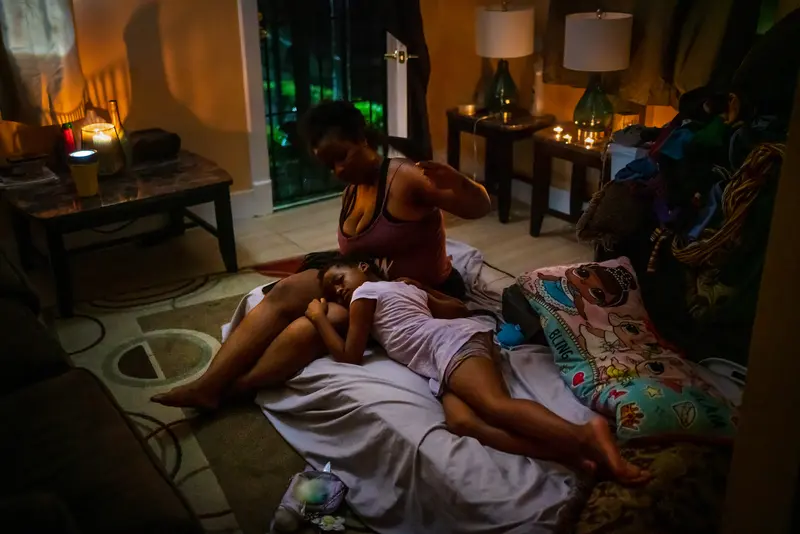
In the months before the storm, 28-year-old Tasheedah Sami had just begun to turn around her life. She moved out of her grandmother’s house and into her own apartment in Central City with her 7-year-old daughter, Harmony. She left her job at the fast-food chicken restaurant Raising Cane’s and enrolled in a training program to become a patient care technician. During her final weeks of online classes, she secured a job at University Medical Center, which she was slated to start in mid-September. With her daughter back in school after spending part of the pandemic in virtual learning, she could finally work without relying on child care.
But after Ida left the city powerless, the new life she had worked so hard to maintain began to unravel. Neither she nor anyone in her family had electricity, and she struggled to find shelter for her and her daughter after the roof of her apartment building partially caved in. Immediately after the storm, she knew she had to contact FEMA to get emergency aid to temporarily move her family into a motel. But because of the outage, she had minimal phone service for two days, making it nearly impossible to reach the agency. Even when the phone service gradually came back, the power did not, and she struggled to keep her phone charged during the long hold times with FEMA’s hotline. It was a week before her disaster aid was approved, which finally allowed her to move her family to a Motel 6 30 miles outside of New Orleans.
Without power, she couldn’t finish her virtual coursework and take her final exam, requirements of her training program. The hospital job fell through, unrelated to the storm, leaving Tasheedah unsure of how she will make enough money to find a new apartment for her and her daughter.
All around the city, families were coming home to see if the prolonged outage had caused damage beyond the scope of Ida’s winds. After a week in Atlanta’s suburbs, Hollins and her son Carl returned to New Orleans. When she walked into her home, she was dismayed by the damage: the shattered windows boarded up, a hole in her kitchen ceiling and an empty refrigerator. Pushing aside worries about how she would pay her $590 energy bill, she used her last few dollars to order a pizza for her son.
Resting in her ICU bed at Tulane Medical Center, Banks wanted nothing more than to go home, flick on her lights and be able to breathe in her air-conditioned apartment. And on Sept. 6, eight days after the outage began and three days into her hospital stay, she heard from her neighbors that the power had been restored. She rode home in an ambulance. When she opened her door, the lights were on, but her air conditioner had stopped working, a grim reminder of her days without power.
“You think about all the backups, and they all failed,” she said. “I don’t think it’s just Mother Nature doing it alone. This is neglect.”
